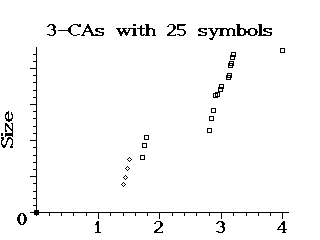| k | N | Source |
| 26 | 15625 | orthogonal array |
| 28 | 19679 | orthogonal array |
| 30 | 24381 | orthogonal array |
| 32 | 29779 | orthogonal array |
| 52 | 30625 | Chateauneuf-Kreher doubling |
| 56 | 37127 | Chateauneuf-Kreher doubling |
| 60 | 41829 | Chateauneuf-Kreher doubling |
| 650 | 45625 | Colbourn-Martirosyan-Trung-Walker |
| 700 | 52127 | Colbourn-Martirosyan-Trung-Walker |
| 750 | 56829 | Colbourn-Martirosyan-Trung-Walker |
| 800 | 64867 | Colbourn-Martirosyan-Trung-Walker |
| 850 | 65713 | Colbourn-Martirosyan-Trung-Walker |
| 950 | 68545 | Colbourn-Martirosyan-Trung-Walker |
| 1000 | 70033 | Colbourn-Martirosyan-Trung-Walker |
| 1300 | 75025 | Colbourn-Martirosyan-Trung-Walker |
| 1352 | 76250 | Cohen-Colbourn-Ling |
| 1400 | 81527 | Colbourn-Martirosyan-Trung-Walker |
| 1456 | 82752 | Cohen-Colbourn-Ling |
| 1500 | 86229 | Colbourn-Martirosyan-Trung-Walker |
| 1560 | 87454 | Cohen-Colbourn-Ling |
| 10000 | 90025 | Colbourn-Martirosyan-Trung-Walker |
